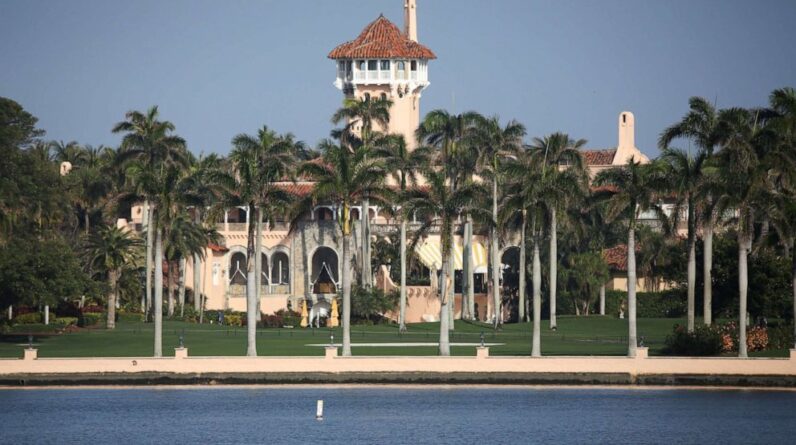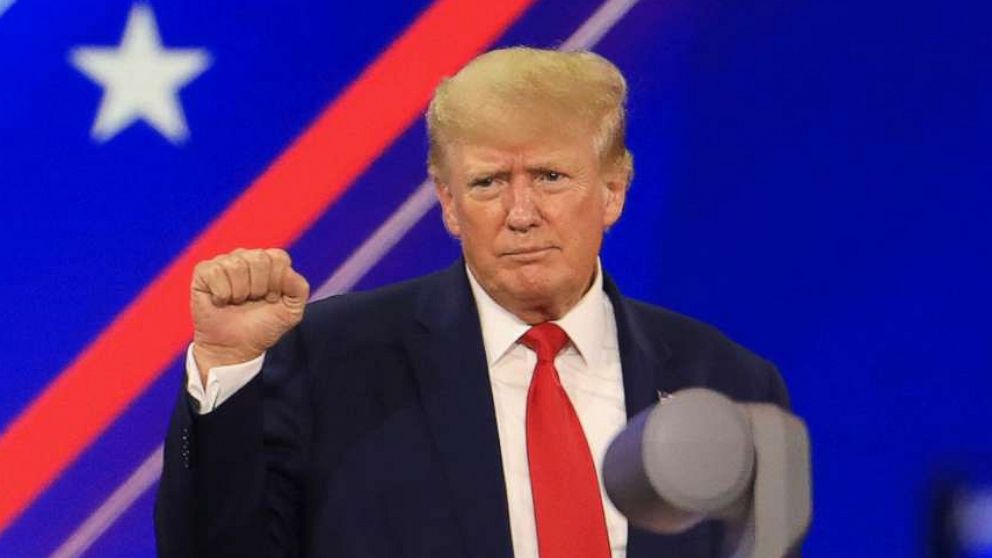
Administration sources familiar with the investigation tell ABC News that the quantity and sensitivity of classified, secret and top secret documents allegedly uncovered in the Mar-a-Lago search raise critical national security questions that must be addressed urgently
Those officials say law enforcement and security officials must try to trace the chain of custody of the material and try to determine if any of the material was compromised.
Officials acknowledged that these critical issues need to be addressed because the material, in theory, would be of great value to foreign adversaries and even allies. Interviews with Trump administration officials are planned, and authorities may even check for fingerprints to see if that provides information about who had access.
Former US President Donald Trump’s Mar-a-Lago resort is seen in Palm Beach, Florida on February 8, 2021.
Marco Bello/Reuters, Archive
The warrant and FBI inventory allege that 11 sets of sensitive information, including confidential, secret and top secret documents, were recovered during the Mar-a-Lago search. There was even highly secret and sensitive Compartmentalized Information (SCI) material. This classification of materials sometimes involves nuclear secrets and terrorist operations based on an overview of the Director of National Intelligence’s (DNI) security protocols, which ABC News has reviewed.
The top-secret SCI documents are classified as national intelligence and involve intelligence “relating to or derived from intelligence sources,” according to a document (DNI) reviewed for this report. This material can come from allies, espionage, scouts or informants.
Top Secret SCI should only be handled under the strictest conditions in securely designated locations. These locations are supposed to be impervious to eavesdropping and no electronic devices are allowed. Only a select few can see SCI, for example a “need to know the right recipient”.
Why the concern? US officials know that these highly sensitive documents are the target of enemy nations and other adversaries who constantly attempt espionage and eavesdropping activities here in the US.

Former President Donald Trump attends the Conservative Political Action Conference in Dallas, Aug. 6, 2022.
Bloomberg via Getty Images
Loss of classified information would “harm” national security: Loss of classified documents would cause “serious harm” to national security and compromise of top secret material creates the potential for “exceptionally serious harm to national security” , according to Executive Order no. 13526 signed by then President Barack Obama in 2009.
Among the critical questions in the wake of the Mar-a-Lago attack are how critical documents were stored at the White House and how it was that so many boxes of highly classified material could be removed in the first place; who exactly was involved in authorizing the removal of the material and who removed the material; how the material was transported to Mar-a-Lago — by plane, by truck — and who had access to it during transport. Top Secret material must have a specifically authorized carrier, cannot be sent by US mail, and can only be transmitted via an authorized government courier service. Other critical questions are: was the material stored at Mar-a-Lago, who had access to it and was it under constant surveillance by security cameras; and what were the security measures and protocols.
The Presidential Archives Act states that presidential records are automatically transferred to the archivist’s legal custody as soon as the president leaves office.
[ad_2]
Source link





